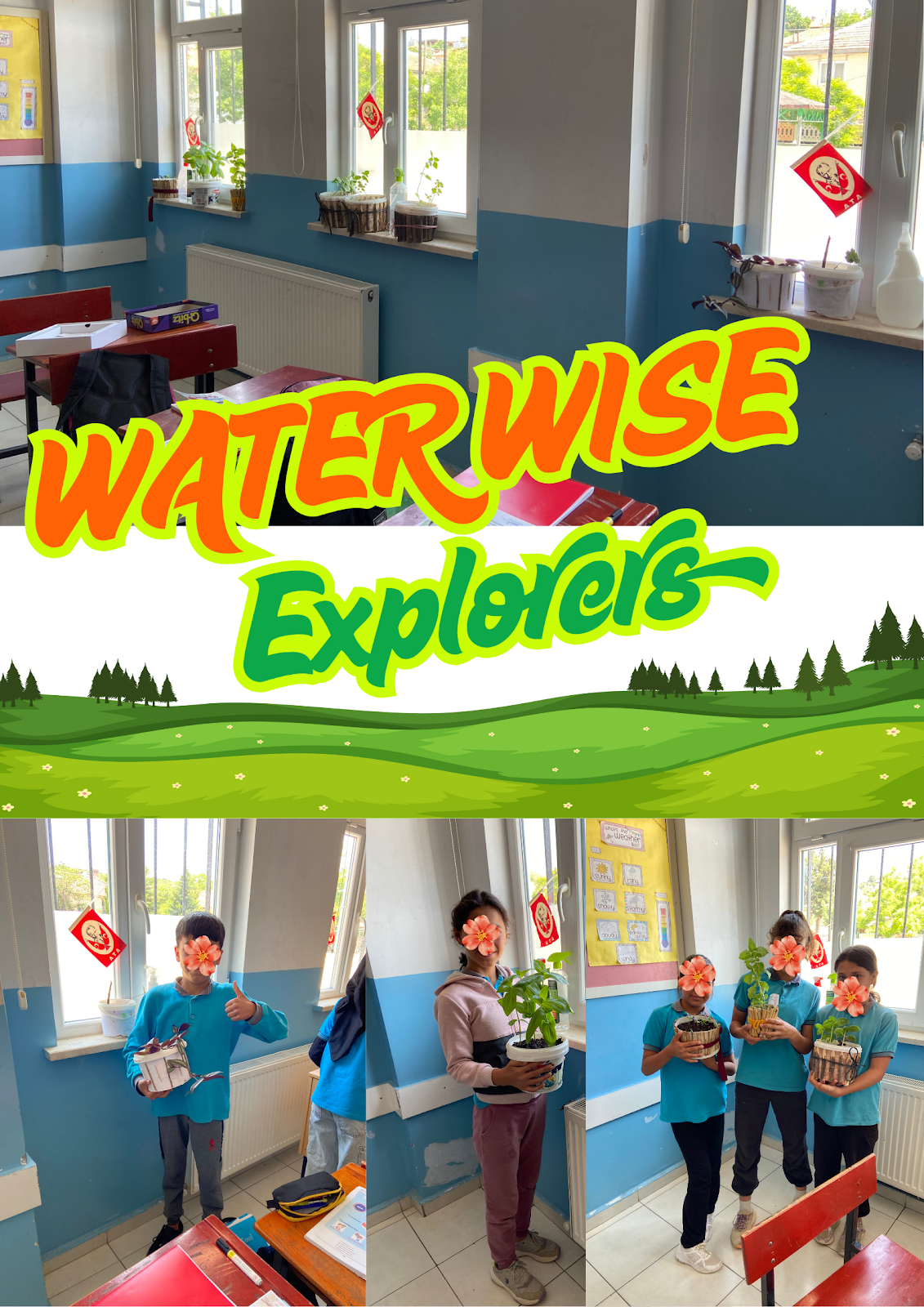Water Wise Explorers eTwinning projemiz kapsamında, Çamlık Hacıbağ Ortaokulu öğrencileri suyun yalnızca musluktan akan kısmı olmadığını keşfetti! Öğrencilerimiz, "su ayak izi" kavramını öğrenerek, günlük yaşamdaki tüketim alışkanlıklarının su kaynakları üzerindeki etkisini fark etti.
İlk olarak öğrencilerimiz "su ayak izi nedir?" sorusunun cevabını bulmak için çeşitli videolar izledi:
What Is a Water Footprint? (UNESCO)
https://www.youtube.com/watch?v=6jzFNLpBXAw)
Virtual Water Explained (WWF)
https://www.youtube.com/watch?v=SB6oHAIM0uc
How Much Water Do You Use Every Day?
https://www.youtube.com/watch?v=48g7ATzuBIQ)
Ardından watercalculator.orgsitesini kullanarak bireysel su ayak izlerini hesapladı.
Bir hamburgerin, kot pantolonun ya da bir fincan kahvenin bile binlerce litre su tükettiğini öğrendiklerinde oldukça şaşırdılar.
Su ayak izi, bir bireyin, ürünün ya da toplumun doğrudan ve dolaylı olarak tükettiği toplam tatlı su miktarını ifade eder. Yani sadece içtiğimiz, bulaşıkta kullandığımız su değil; aynı zamanda yediğimiz gıdanın üretilmesi, kıyafetlerimizin boyanması veya kullandığımız elektriğin üretimi için harcanan gizli su miktarı da bu hesaba dahildir.
Bu etkinlikle öğrenciler:
- Suyun görünmeyen tüketim alanlarını fark etti,
- Su tasarrufu için alabilecekleri önlemleri tartıştı,
- Küresel su krizine karşı bireysel farkındalık kazandı.
-------------------------------------------------------------------------------------------
As part of our Water Wise Explorers eTwinning project, our students learned that water is not just what flows from the tap — it's also hidden in the products we use every day! Through this activity, students discovered the concept of the water footprint and reflected on how their daily choices impact global water resources.
They began by watching a series of educational videos to answer the question
What is a water footprint?
What Is a Water Footprint? (UNESCO)
https://www.youtube.com/watch?v=6jzFNLpBXAw)
Virtual Water Explained (WWF)
https://www.youtube.com/watch?v=SB6oHAIM0uc
How Much Water Do You Use Every Day?
https://www.youtube.com/watch?v=48g7ATzuBIQ)
- Then, using https://watercalculator.org, each student calculated their personal water footprint.
- They were amazed to learn that one hamburger, a pair of jeans, or even a cup of coffee could require thousands of liters of water to produce!
A water footprint represents the total amount of fresh water used directly and indirectly by an individual, product, or society. It includes not only the water we drink or use at home, but also the "virtual water" used in the production of food, clothes, electricity, and more.
Through this activity, students:
- Gained insight into invisible water usage,
- Discussed ways to reduce water consumption,
- Became more aware of their role in protecting global water supplies.













